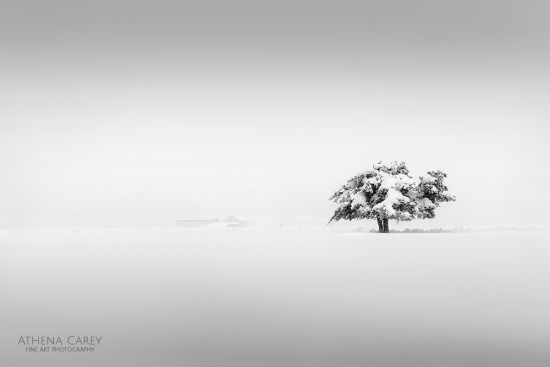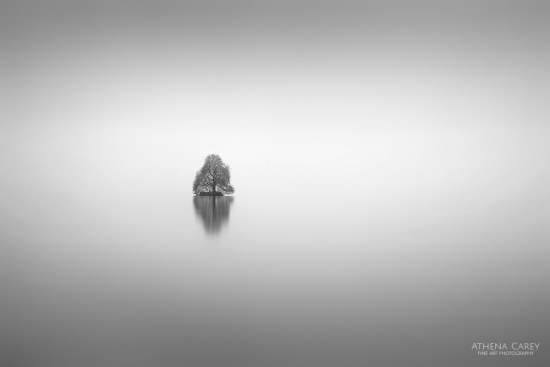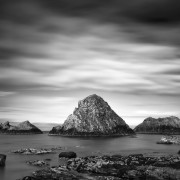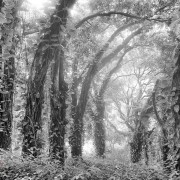Why you should try Black and White Landscape Photography
For some of us, this is not even a question. In fact, there are those of us who find ourselves so sensitive to color at times that black and white photography provides a needed break from the cacophony of our colorful lives. This creates a deep calling for expression through black and white photography that defies any need for such a question.
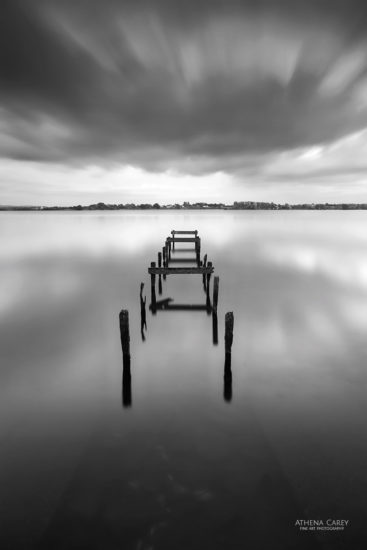
Long exposure Black & White landscape photography with an ND filter – Lough Neagh, County Antrim, Northern Ireland
But for others, this need to express in monochrome does not (at first) exist and understandably they ask, “Why would you drain an image of it’s vibrancy? Of the life that color gives to our lives? How does doing this make an image more or better?”
I do agree that sometimes color is the only choice for the accurate expression of an emotion or feeling; or even to tell a particular story or share a message or the essence of place. And while I am somewhat uneasy working in color myself, I still do it because it pushes me creatively, stretches my boundaries, and helps me grow as an artist. If you feel a hesitation or uneasiness about creating without color, here are a few reasons for you to also push your limits and give it a try.
Reason #1: Simplification & Elimination of Distractions
When we remove color from our images, we instantly simplify the subjects and scenes we are photographing. Color in itself is complicated, so it’s absence immediately makes for simpler images. In addition, we are able to eliminate distractions created by items that are powerful by their color alone, thereby strengthening our subjects.
In taking this control back from color, we are able to accentuate elements that may have been lost or overshadowed by the colors around them. Without color, other elements of your photos have the space to speak more clearly. It could be a small girl standing in a field of vibrant wildflowers or the expression on your mother’s face at your sister’s garden wedding. Without color with which to compete, your subjects can shine through more effectively.
Reason #2: Classic and Timeless Style
Black and white photography has and will always have a classic and timeless style. When we think of photographs of the past – of our parents, our grandparents, wartime photojournalism, Ansel Adams prints… it’s always black and white or sepia images that come to mind. They are not trendy, not part of a fad, not the newest processing technique, nor printed on some new medium. Instead, they carry an air of respect and timeless beauty through their simplicity. This is something that we are still able to achieve in our present time by working in black and white as earlier photographers did.
Reason #3: An Escape from Reality
My favorite reason for creating art in black and white is that, by removing the color from an image, you have taken an enormous step away from our reality. The truth… I am a bit of an escapist at heart so this is quite appealing to me. But even for people who have less of an obvious desire to escape reality, a departure from it, even a small one like using monochrome palettes, grabs their attention for a moment longer than looking at a scene presented the way they would normally see it. With this extra moment, you have the chance to hold their interest for even longer if your image is strong.
In this world of shockingly-short attention spans where we scroll at top speed through millions of images in social media and page through magazines without stopping, that one extra moment spent looking at your image is another chance that people will truly connect with it, with your message, with your artistic expression. That for me is the ultimate goal in creating photographs.
Why not give Black & White Photography a try?
Black and white photography is universal. It can be applied to any genre, any subject, any type of lighting, any time of day. In fact, when you start shooting for black and white, you discover that you start to look at the world differently. You become more aware of light – its quality and its direction. Similarly, you begin to notice contrasts in tone and texture, using them to pull viewers through your images and to feel the things you feel. You start thinking more about your compositions, using balance and the space within your frame more strategically. All of these things benefit your photography as a whole, not just your black and white photography. So get out there and give it a go. You may be surprised by how much you love it once you get started.

